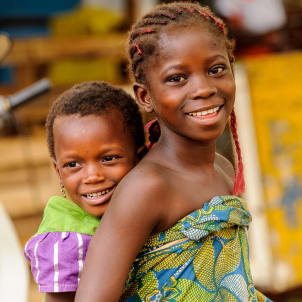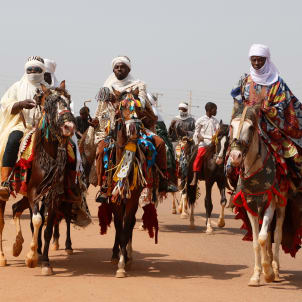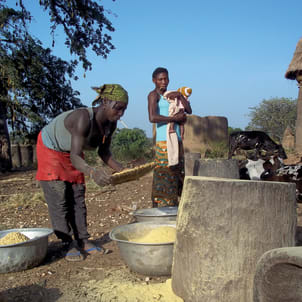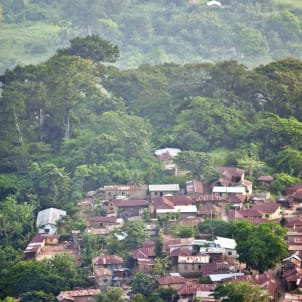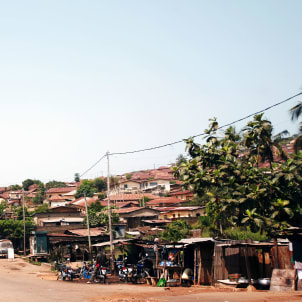Togo, jewel of West Africa
4.4/5305 reviews
Discover the cultural and natural richness of Togo.
Between golden beaches and lush savannas, Togo awaits you.
Must-see locations
Explore Togo: A Unique Adventure in West Africa
Togo is a country of cultures and traditions. The ethnic groups that comprise it (about fifty) have their own rites, their festivals, their way of life and organization, their way of understanding the world around them. The richness of the country lies in their diversity and in their still relatively preserved and authentic character. One of the privileged moments to delve into these beliefs and traditions are the traditional festivals. They are generally an opportunity to thank the gods and ancestors and to remember the origins. Although initiatory rites tend to disappear due to modernity, some populations continue to practice them in an ancestral way.
The Maritime region provides an opportunity to discover animist and voodoo rites around Aného and Togoville. These practices are deeply rooted in the communities and still rhythm the life of the villages. The region is the setting for very beautiful traditional festivals such as those of Epe-Ekpe (in Glidji, New Year of the Guin), Dezan (diaspora of Togoville) or Ekpan (carnival of Agbodrafo). Towards Tsévié and Notsé, at the heart of the historical center of the Ewe people, there are also some very beautiful festivals: Agbogbo-za in Notsé, Ayiza in Tsévié.
The Western Plateau region is mainly populated by farmers and cultivators living in the mountainous regions of Kpalimé, Badou, and Atakpamé. Further north, one encounters the Islamized populations of the Sokodé region (Tem) who have organized themselves around traditional chieftaincies. In Kara, you reach the Kabyé country, "the stone farmers" whose traditions are still manifested today through the "Evala wrestling". To the west are the Bassar who knew the ancestral ironwork. 50 km to the north are the Bétammariba and perhaps the country's most prestigious site: the Koutammakou landscape (also known as Tamberma country) whose populations and fortified dwellings (takienta) are classified as a UNESCO World Heritage site.
Finally, in the Dapaong region, one will encounter the Moba-Gurma people and their ancestor worship. Each of these ethnic groups and cultures bears witness to Togo's very great cultural diversity.
An Authentic and Preserved Charm
Discover a country where nature and culture intertwine harmoniously, offering a unique adventure in the heart of West Africa. The golden beaches of the south invite relaxation under the gentle rustling of coconut trees and the comforting song of the ocean. Explore the colorful markets where spices exude enchanting aromas, reflecting the richness of local cuisine.
As you venture inland, the verdant mountains reveal spectacular waterfalls and lush forests, ideal for hiking enthusiasts. The country's ethnic diversity is expressed through its traditional villages where music and dance enliven the festivities.
The north offers striking landscapes with its vast savannas and majestic rock formations. Participate in ancestral ceremonies that celebrate life and harmony with the environment. The warmth and welcoming nature of the inhabitants will make you feel at home, turning each encounter into unforgettable memories.
The Natural Wealth of Togo
Throughout its 650 km, Togo features a variety of landscapes. The coastline and maritime region are characterized by fine sandy beaches lined with coconut trees, stretching between Lomé and Aného. The sea is dangerous there, but the beaches remain wild and mostly undeveloped. The maritime region offers rich biodiversity, especially around the Mono River and Aného with its mangroves.
The West Plateaus region is an exceptional verdant setting, rich in precious woods and tropical plants like ebony, iroko, or kola trees. It is ideal for cultivating coffee and cocoa, and there are many natural waterfalls. Further north, the central region houses the Fazao-Malfakassa reserve, while the Kara region boasts enchanting landscapes of volcanic massifs and vast plains. Finally, in the north of the country, the Savannas region offers an arid landscape with large plains overlooked by imposing cliffs.
Welcome and Hospitality in Togo
The sense of welcome and hospitality is among the greatest qualities of the Togolese people. A visitor inevitably feels at ease in a country where a stranger is received with all the honors and respect due to them. Roadside vendors will call you Auntie or Uncle, a mark of both affection and respect. Here, the traveler quickly becomes a member of the family, who can share daily life simply, including meals and even lodging. They are invited to festivities or ceremonies, such as funerals and "liberations." The visitor knows they are always welcome in Togo, "the smile of Africa."
Africa in Miniature: A Journey Through Togo
Togo is a dream country to discover and understand, in a few days or weeks and in a few kilometers, all the richness and diversity of Africa. The country concentrates a significant number of cultural and natural sites on a small territory. This small country offers a multitude of experiences, ranging from beautiful beaches to lush mountains, including natural reserves and traditional villages. Moreover, its warm and welcoming population makes the stay even more memorable.
A website by
Customize your trips with Quotatrip and receive tailor-made offers directly in your inbox.
Discover a country
